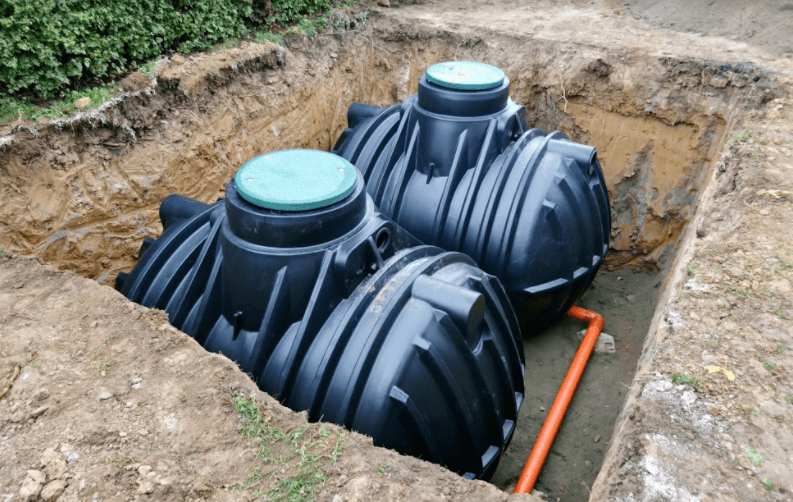An underground water tank system is a reliable and unobtrusive way to store large amounts of water on any property. Several other factors should be considered when setting up an underground water tank system, and these will become clear as you read along. It’s recommended that you work with an experienced plumber /salesperson when considering installing such a system on your property.
Harvesting rainwater to use in underground water tanks can have several benefits. Take a look at the following advantages:
- Cost-savings: The additional water supply helps reduce the household’s monthly water bills.
- Supply: The most significant benefit is that it’s possible to produce enough water supply to meet a family’s needs.
- Eco-friendly: Harvesting rainwater helps to conserve water, which can reduce the overall consumption of natural resources.
- Safety: Collecting rainwater using an efficient underground water tank can also reduce the risk of flooding and help ensure that the tanks are securely placed.
- Value: Finally, harvesting can improve the aesthetics of your property. Rainwater will be stored securely, and you can enjoy your outdoor living space without having to mow the grass or clean the gutters.
However, it’s essential to ensure that the tanks are well-maintained and installed according to safety standards. Here’s what you should know about installing an underground water tank for your home:
Understand Your Options
Installing an underground water tank is the single most cost-effective way to supply potable water for your home or business. Your budget and needs determine which water tank material to use.
- There are many different kinds of underground water tanks, including concrete, fiberglass, plastic, stainless steel, and high strength concrete. In some cases, underground water tanks are constructed from materials such as pea gravel. Paver blocks may also be used.
- Plastic tanks are generally an excellent choice to replace bulky old concrete water tanks, and they rarely require service or maintenance.
Hire An Expert
An underground water tank in your home can be very beneficial and cost-effective if it adequately meets the requirements laid out by the professionals that you’ll find on sites like the watertankfactory.com.au website. Several factors can affect an underground tank’s efficiency – this is particularly true when dealing with rainwater tanks.
- The first stage of installation involves inspecting the area where the tank will be placed. If the tanks are constructed in an area with a history of flooding, a plastic cover may help protect the base. This material helps to keep the water in place and prevents slippage from happening. Site preparation is essential in this type of tank installation. The area should be flat, as the tank’s overflow water can cause significant problems. Once the site has been prepared, you need to channel the excavated dirt away from the tank using a hose and then start digging while applying some pressure on the soil. It would also help if you made sure that the ground surrounding the tank is stable because it can cause the tank to leak and overflow.
- A minimum tank dimension is required for installing the tanks. It should be no less than 2 x 90 mm. There are different procedures involved in the installation of this type of tank. The first method is through the use of mechanical cranes; the other way is through submersible pumps.
- Before installing the tanks, you must make sure that they do not exceed the maximum allowable depth. The tank’s overflow water level can cause significant damage, as it can drown structures and cause considerable sewage disruption. As such, these tanks must be installed using the correct procedure and equipment. If the tank exceeds the maximum depth limit, it may leak, and the soil around the tank must be cleaned.
Maintaining Your Water Tank
Many homeowners and businesses are turning to rainwater harvesting as an alternative to traditional water tank storage. In many cases, the cost of installing an underground water tank can be far less than the monthly payments required to keep it running. In addition, maintaining the underground tank isn’t complicated. A reliable service provider can perform the necessary inspections for you – this is to ensure that the rainwater is captured correctly and the supply is free from contaminants.
- If you’re looking to make your concrete tank last longer, you can invest in automatic cleaning systems. Even systems will allow you to shut off the pump if the tank is not in use, saving you on the electricity bill each month.
- The best way to keep your basement, concrete storage tanks, and other underground storage tanks clean is to have them maintained periodically by a professional company specializing in underground storage tanks.
Takeaway
Installing an underground water storage tank is a lot like putting a new roof on your house. It may require an ample investment, but it will lower your expenses in the long run and make your house more valuable. All you need to do is hire a professional underground water tank installer to make your job easier.




